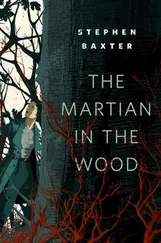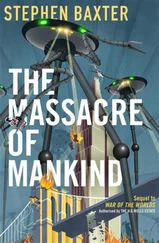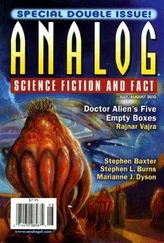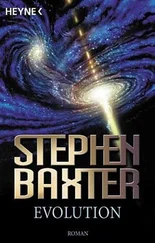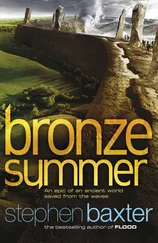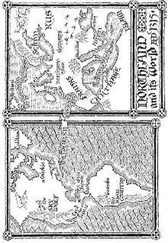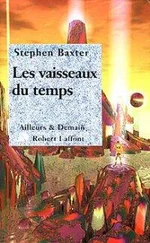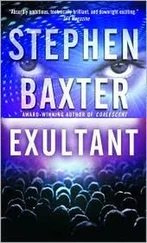Anyhow he contacted Monica, asking for more specific measurements.
He suspected it was the failure of the nukes that had triggered the Administration, finally, into acting. Henry had never expected a nuclear attack to succeed — quite the opposite — but he supposed it had to be tried. And its failure resonated like the failure of a god, like the death of Superman, confirming their worst fears.
After the Nevada failure, in fact, there had been questions asked about the need to carry a nuke on the Moon trip. Henry had insisted; and everybody seemed too busy to argue with him.
Still, though, the Administration’s step-by-step commitment to the project wasn’t complete; it wasn’t yet confirmed that they would actually be allowed to launch. As if, Henry thought bleakly, they still expected things to somehow get better.
He managed to sleep through most of the bus journey out of Moscow to Star City.
Star City, more formally known as the Gagarin Cosmonaut Training Centre, was the place the cosmonauts lived, along with the instructors, administrators and mission planners. It was a purpose-built town of four or five thousand people; its atmosphere, to Henry, was somewhere between a university campus and a military barracks.
They were greeted with a lunch banquet in a building called the recreation centre — and it was literally a banquet, Henry found to his amazement, with cognac and champagne; the Russians were treating their contribution to this mission as a cause for celebration. Henry joined in enthusiastically, despite frosty glares from Geena. He figured that if he got stoked enough there would be no more training today, at any rate.
He was introduced to Arkady Berezovoy, a tall, dour, strong-looking cosmonaut who, it seemed, would be riding to orbit with them, and so would be joining in the training from now on. It turned out that Geena and Arkady knew each other already; they had worked on Station assignments.
When Henry was introduced, Arkady grasped his hand firmly and looked into his face, searchingly, Henry was left puzzled.
After lunch they were taken for a tour of Star City.
Everything seemed built on an immense, heroic scale, a legacy of the Soviet days. He was shown a giant mock-up of the old Mir station, a spacesuit display, and a hydro pool where the Russians planned their spacewalks. There was a culture centre, and a giant memorial to Gagarin. The first cosmonaut of them all stood heroically, one hand behind his back, looking up at the stars.
There was even a planetarium, intended, Arkady told him seriously, for the cosmonauts to learn interplanetary navigation for the Soviet mission to Mars which had never come. In the planetarium foyer was a mockup of the spacecraft which could have achieved the mission, perhaps in the early 1990s, assembled from hauntingly familiar components: Energia heavy-lift boosters, a Mir-based habitat module, a Mars lander built around Proton booster rocket stages.
But those dreams were long gone.
He was taken to gladhand the staff at TsUP, Russia’s mission control at the unremarkable little town of Korolyov, outside Moscow. The control room looked like a small cinema, with a big screen to show the Station’s trajectory curving over Earth’s surface, and four rows of consoles dating from the 1980s. Under the screens there were two big sponsors” banners, one from a US computer firm which had supplied the latest set of pcs that supplemented the older equipment, and one, bizarrely, from the Red October chocolate factory, with a slogan about celebrating “shared Russian traditions of quality’. The most useful piece of equipment looked to be a plastic model of the Space Station, which got more attention from the controllers than the screen images.
The cosmonauts still earned a decent wage, but even that was mostly funded by American money funnelled through the Station project, and many of the engineers and controllers, bringing home less than a couple of hundred bucks a month, worked as cab drivers and cleaners in Moscow to cover their bills.
It seemed to Henry the disparity between space dream and reality was even harsher here than in the US.
Most of the training forced on him here, it turned out, was in emergency procedures.
Henry was heavily briefed on what to do if a Station module was slow-punctured by a micrometeorite, and what would happen if there were a failure of the booster in the early stages of launch (an escape rocket would haul the manned capsule clear — a lot of noise and shaking, high Gs, probable unconsciousness, a spell in hospital). It wasn’t that there was anything for him to do in such an eventuality, but it was thought better for him to know what would hit him.
Henry, exhausted, disoriented, overtrained and bewildered, didn’t agree.
He was trained for emergency landing. The Soyuz was designed to come down on land, somewhere in the Soviet Union, and there would be choppers to pick him up. In theory. But he was taken to the bush in Kazakhstan, a place the capsule might come down where helicopters wouldn’t be able to land, and he practised getting into a recovery chair lowered from a helicopter.
And he underwent what the American managers called water egress training. With Arkady and Geena, he was dropped in a mocked-up Soyuz entry module into the Black Sea. It was a July day and it was hot — around thirty Centigrade — and the three of them, stiffly non-communicative, struggled in the hot, cramped capsule, bobbing in the sea, to change out of their spacesuits and into survival gear. It took three hours to get ready, and when Arkady finally opened the hatch, steam gushed out, and briny sea air replaced the stink of vomit that had come to dominate in the capsule.
They had to float in the water, holding onto each other in a triangle. The rescue crews left them there for another hour before fishing them out, and barely a word passed between them.
And in the middle of all this robust Russian training, they were visited by Frank Turtle and his team, red-eyed from jet lag and overwork, with bundles of charts and vu-graphs and laptops, who took Geena and Arkady through the procedures they were working out in such haste: procedures for the real mission, beyond the technicalities of Soyuz and Station — the flight to the Moon itself.
But still, final approval for launch didn’t come.
Then, one August morning, Henry was woken, to see the new images, of fire and ash and flood coming out of the west coast of America, and he knew there would be no more hesitation.
The editorial review was not going well. And, Joely Stern thought with dismay, it was only 9.00 a.m.
Cecilia Stanley, her editor, read from the copy glowing on her screen. “… And from there Earthquake and Thunder went south… They went south first and sank the ground… Every little while there would be an earthquake, then another earthquake, and another earthquake… And then the water would fill those places… ‘That is what human beings will thrive on, ’ said Earthquake… Shit, Joely. Earthquake and Thunder. What is this, Sesame Street?”
Joely kept her temper. She’d already lost it once too often in this job.
As an insurance, though, she had her ID in her pocket, in case she was fired on the spot.
“It’s a Yurok myth,” she said evenly.
Sitting behind her desk of expensive dressed stone, Cecilia was a severe, toothy woman of thirty-five. A classic corporate climber; a devourer of souls, thought Joely. “And just what,” Cecilia said in her cool way, “ precisely is a Yurok?”
“They’re the natives of this region. The Pacific coast. The legend seems to be a reference to a massive quake in this region in prehistoric times. 1700. A folk memory.”
Читать дальше
Конец ознакомительного отрывка
Купить книгу

